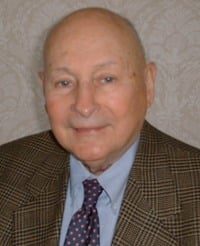
In fact, Orton was the first modern neuropathologist to recognize the harm that the new whole-word, or sight-word method, of teaching reading was having on children. He had studied cases of reading disability in Iowa in the late 1920s, and came to the conclusion that the cause of the children’s problems was this new teaching method.
Orton was not the first person to recognize this problem. It was first written about in 1844 by Samuel Stillman Greene (1810-1883) on behalf of the Boston Masters for their famous Remarks on the Seventh Annual Report of the Honorable Horace Mann, Secretary of the Massachusetts Board of Education, in which they took to task the sight-reading method that had been adopted by the Boston primary schools in 1837 and produced a literacy disaster. And it was this critical essay that revealed who originated this new method of teaching reading: the Rev. Thomas H. Gallaudet, the director of the American Asylum for the Deaf and Dumb in Hartford, Connecticut, who taught the deaf to read via a sight method and thought that this method could be adapted for use by normal children.
By the way, the first line of Rev. Gallaudet’s sight-word primer was: “Frank had a dog, its name was Spot.” Was it a mere coincidence that Spot later turned up in the Dick and Jane look-say reading program edited by William Scott Gray?
Today we know why this new sight-word method caused a literacy disaster. It forced children to use the right brain to perform the functions of the left brain (the site of the language faculty), which actually deforms the child’s brain, causing dyslexia. In fact, the sight method acts as a non-surgical pre-frontal lobotomy. However, since that portion of the brain is not actually physically removed, it can be repaired according to the latest findings of neuroscientists, revealing the brain‘s great plasticity..
However, in 1929, no one seemed to have read what the Boston Masters wrote in 1844. And as we know, when we ignore or forget history we are bound to repeat it. Not only was Dr. Orton unaware of what had been written in 1844, but educators of today are not aware of what Dr. Orton wrote in 1929. He said in as diplomatic way as possible:
I wish to emphasize at the beginning that the strictures which I have to offer here do not apply to the use of the sight method of teaching reading as a whole but only to its effects on a restricted group of children for whom, as I think we can show, this technique is not only not adapted but often proves an actual obstacle to reading progress, and moreover I believe that this group is one of considerable educational importance both because of its size and because here faulty teaching methods may not only prevent the acquisition of academic education by children of average capacity but may also give rise to far reaching damage to their emotional life.
What is most critical is that Orton, in this essay, identified sight-reading methods as “faulty teaching methods,” actually accusing America’s top educators, who were responsible for propagating this new teaching method, as engaging in a form of educational malpractice. And that is why this article was never given the circulation it should have had. Indeed, the Journal of Educational Psychology was owned and edited by the very professors Orton was criticizing. And they saw to it that it never became widely known.
Yet, why did they publish it if it was damaging to their agenda? First, because it confirmed that the dumbing down of the American people could be produced by their new teaching methods, which was a desired outcome because proper socializing of students was now the primary objective of schools, and it was felt that less-educated students would be easier to influence than more-educated ones. Second, because they foresaw the creation of a whole new field of research and treatment of reading disability, which would prove lucrative to the field of educational psychology. Thus, it is on the backs of suffering, frustrated children that educational psychology has built its empire.
Today, drugs cannot be sold to the public until they are proven to be safe. The advertising of cigarettes has been banned from television, and cigarette packages must bear a warning that smoking can cause cancer. Yet, a teaching method, which we’ve known for years causes severe learning problems, is not only permitted to be used in our schools but is defended tooth and nail by the educators at the highest levels of teacher training in American universities. Only a small group of dissident educators actually know what Orton was talking about.
But there is one large group of educators in America aware of this problem: the homeschoolers, who almost universally use intensive phonics to teach their children to read. Yet, millions of American children are condemned to have their brains deformed because the government schools cannot prevent educational malpractice. Indeed, they can’t even recognize it when it stares them in the face.
That is why it’s important to remember Dr. Orton, who pioneered the identification of “faulty teaching methods” before the educators could impose them on all the public schools in America. Dr. Orton could not stop them. Parents could not stop them. No one could stop them. And that is why American literacy is in the dumps. Hopefully, the readers of this article will want to see it widely circulated among their friends, families and favorite columnists and commentators. Maybe then educators would become embarrassed enough to change their ways and restore sanity to primary education.


